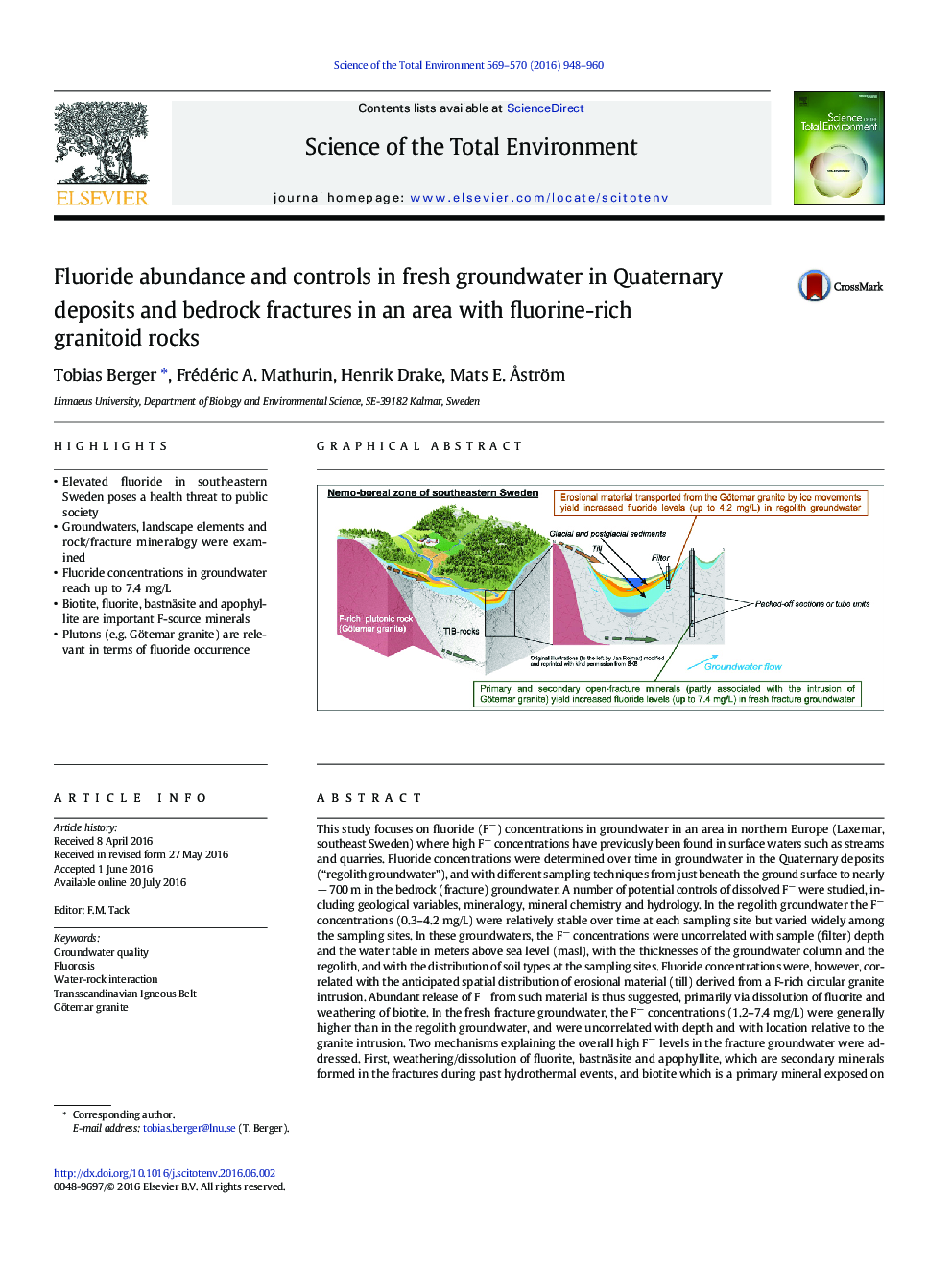| کد مقاله | کد نشریه | سال انتشار | مقاله انگلیسی | نسخه تمام متن |
|---|---|---|---|---|
| 6320203 | 1619721 | 2016 | 13 صفحه PDF | دانلود رایگان |
- Elevated fluoride in southeastern Sweden poses a health threat to public society
- Groundwaters, landscape elements and rock/fracture mineralogy were examined
- Fluoride concentrations in groundwater reach up to 7.4 mg/L
- Biotite, fluorite, bastnäsite and apophyllite are important F-source minerals
- Plutons (e.g. Götemar granite) are relevant in terms of fluoride occurrence
This study focuses on fluoride (Fâ) concentrations in groundwater in an area in northern Europe (Laxemar, southeast Sweden) where high Fâ concentrations have previously been found in surface waters such as streams and quarries. Fluoride concentrations were determined over time in groundwater in the Quaternary deposits (“regolith groundwater”), and with different sampling techniques from just beneath the ground surface to nearly â 700 m in the bedrock (fracture) groundwater. A number of potential controls of dissolved Fâ were studied, including geological variables, mineralogy, mineral chemistry and hydrology. In the regolith groundwater the Fâ concentrations (0.3-4.2 mg/L) were relatively stable over time at each sampling site but varied widely among the sampling sites. In these groundwaters, the Fâ concentrations were uncorrelated with sample (filter) depth and the water table in meters above sea level (masl), with the thicknesses of the groundwater column and the regolith, and with the distribution of soil types at the sampling sites. Fluoride concentrations were, however, correlated with the anticipated spatial distribution of erosional material (till) derived from a F-rich circular granite intrusion. Abundant release of Fâ from such material is thus suggested, primarily via dissolution of fluorite and weathering of biotite. In the fresh fracture groundwater, the Fâ concentrations (1.2-7.4 mg/L) were generally higher than in the regolith groundwater, and were uncorrelated with depth and with location relative to the granite intrusion. Two mechanisms explaining the overall high Fâ levels in the fracture groundwater were addressed. First, weathering/dissolution of fluorite, bastnäsite and apophyllite, which are secondary minerals formed in the fractures during past hydrothermal events, and biotite which is a primary mineral exposed on fracture walls. Second, long water-residence times, favoring water-rock interaction and build-up of high dissolved Fâ concentrations. The findings are relevant in contexts of extraction of groundwater for drinking-water purposes.
549
Journal: Science of The Total Environment - Volumes 569â570, 1 November 2016, Pages 948-960
